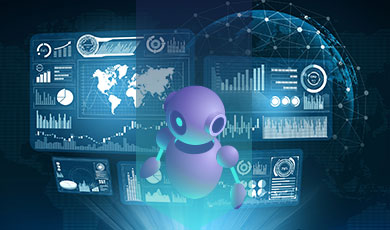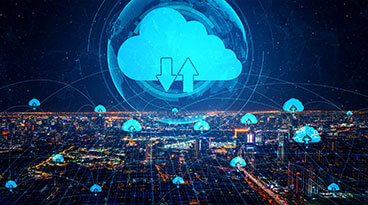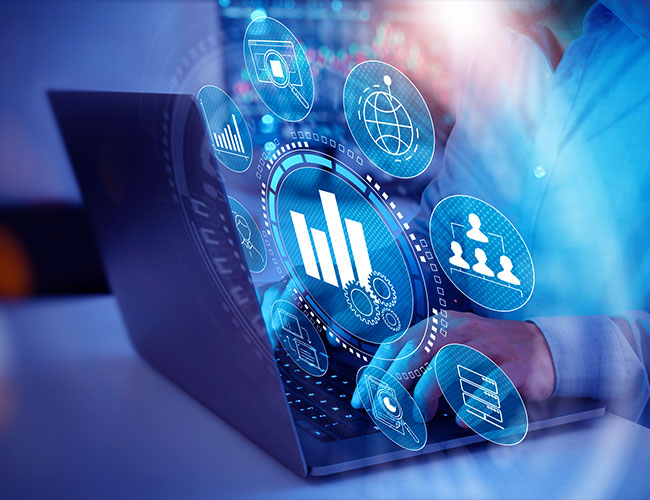For decades, Windows served as the workhorse of the business world. In recent years, however, a significant transformation has occurred with the rise of cloud infrastructure platforms.
Enterprises now realize that legacy on-premises Windows workloads are impeding their progress. Core challenges include licensing costs, scalability issues, and reluctance to embrace digital transformation.
Migrating and modernizing Windows workloads on the cloud may seem daunting. For example, where does one start with assessing workloads and moving them to a cloud platform like AWS? Fortunately, a trusted consulting partner like Trianz can support you on your innovation journey.
Continue reading as we explore the processes and strategies businesses can employ to assess, migrate, and optimize legacy Windows workloads on the AWS cloud platform.
What Types of Windows Workloads can be Modernized on AWS?
Many legacy Windows workloads are candidates for modernization on the AWS cloud.
The list below is a good initial reference point to consider your existing Windows workloads and to determine the potential scope of modernization for your enterprise:
Windows Server 2008, 2012, 2016, and 2019 operating system environments and virtual desktop infrastructure (VDI)
Microsoft SQL Server 2008, 2012, 2014, 2016, and 2017 relational database management systems (RDBMS)
Active Directory Domain Services (ADDS) for network users, groups, applications, and devices
SharePoint servers and intranet sites
Exchange Server for email and calendar services
BizTalk Server system integration and process automation
Storage Server
Dynamics AX 2012 for enterprise resource planning (ERP)
Hyper V virtualization and hypervisors
.NET and ASP.NET applications and services
Endpoint Configuration Manager
Legacy batch scripts and ETL jobs
What is the Best Approach to Modernize Legacy Windows Workloads or Systems?
According to Gartner, there are seven core approaches to modernizing legacy applications and systems. These options are ranked based on complexity, from easiest to most complex:
Encapsulate – This is where workload data and functions are encapsulated into an object. It is commonly used in object-oriented programming (OOP), with techniques including member variable encapsulation, function encapsulation, and class encapsulation. The encapsulated workload can be deployed as an API service or microservice.
Rehost – This process is commonly referred to as lift and shift. The app or workload remains the same; it is moved as-is to a new infrastructure platform.
Replatform – This process is like lift and shift, with minimal code changes to support a change in the runtime environment or platform.
Refactor – For older and resource-heavy legacy workloads, developers can refactor. This involves code restructuring and optimization to reduce computational requirements and improve efficiency without altering the core behavior of the app. One example is refactoring monolithic entities into microservices to leverage containerization in the cloud.
Rearchitect – This option preserves the core functionality of the app while changing the underlying components and dependencies. For example, the data layer could be changed from SQL to NoSQL to retain the original functionality and optimize latency when instantiating database buckets .
Rebuild – This option is common when legacy workloads fail a candidacy assessment for migration, i.e., the app cannot function or isn’t worth moving to the cloud. The entire workload is rebuilt using modern technologies while preserving the original scope and specifications.
Replace – If other migration approaches are not cost-effective or feasible, a last resort is a replacement with custom or out-of-the-box (OOTB) components. This could include the integration of SaaS or PaaS services or custom software development.
What are the Benefits of Microservice vs Monolithic Architecture?
Modernizing Windows workloads on AWS presents a significant opportunity to move from aging monolithic architectures to microservices.
In a monolithic setup, an application or workload typically includes multiple services and functions that are interdependent. For instance, imagine an e-commerce website with a payment gateway, a storefront, and an inventory database:
If a developer updates the payment gateway codebase, the entire e-commerce site must be taken down to deploy the change – leading to service downtime and unavailability.
Due to high module interdependencies, if the payment gateway experiences an error, the rest of the e-commerce site is affected. To restore the service, the entire website must be restarted – which breaks the storefront and database.
In contrast, if the e-commerce site used microservice architecture:
The developer can update the payment gateway independently; the storefront and database remain online; users can still browse products or services and access their account and order details.
If the payment gateway bugs out or goes offline, the IT team can restart this individual service without causing downtime on the storefront or database. This also reduces the risk of data loss and minimizes negative impacts on the user experience (UX).
Furthermore, containerization technologies like Docker and Kubernetes in the cloud enable distributed, scalable systems. Examples include elastic scaling based on demand, self-healing, and orchestration for microservice components.
How do you Start the Windows Workload Modernization Process on AWS?
Ready to modernize and move your Windows workloads to the AWS cloud?
Trianz is a Microsoft Gold-certified Partner and Advanced Consulting Partner with AWS. Our team possesses the expertise to maximize the benefits of modernization without sky-high costs, disruption, and complexity.
We have broken down the Windows workload modernization process into the following steps:
1. Identify Windows Workloads Using a Portfolio Assessment
Start by identifying what can be modernized and optimized – these are your candidates.
Then perform a candidacy assessment to gauge whether it is worth modernizing the workflow, as well as the impact on the business factoring in:
Current operating costs
Cost-savings forecasts
Identification of dependent business processes
Cost of redevelopment
Risk assessments
Another consideration is what modernization pathways exist for the workload; does AWS offer a relevant platform or service to migrate to?
2. Analyze the Total Cost of Ownership (TCO) for Legacy vs AWS
Legacy hardware running costs
Legacy software maintenance and licensing costs
Staff workloads and salaried expenses
Compare these figures to the TCO on an equivalent AWS service. Amazon offers a handy TCO calculator for Microsoft workloads. Cost factors to consider with AWS services include:
Compute
Data storage
Outbound data transfers (data transfers within the same AWS Availability Zone are free)
3. Choose a Modernization Approach from the 7 Rs
Our blog on the 7 Rs of Transformation can help you determine the right modernization approach.
When choosing an approach, consider these aspects of your Windows workload:
Architecture
Business objectives and outcomes
Complexity of the modernization process
Compatibility
Data requirements
Existing functionality vs desired functionality
Resource availability
Security requirements
Technical debt
AWS also offers a range of modernization tools that can help you streamline and expedite the process:
AWS Migration Hub
Porting Assistant for .NET
AWS Microservice Extractor for .NET
AWS Toolkit for .NET Refactoring
AWS App2Container
Babelfish for Aurora PostgreSQL
AWS Data Migration Service
AWS Schema Conversion Tool
4. Identify the Destination AWS Platforms and Services for Windows Workloads
There are hundreds of standalone AWS services and platforms to choose from.
Here is a cheat sheet based on the Windows workloads mentioned earlier in this blog:
Windows Server -> Amazon Elastic Compute Cloud (EC2) Windows instances
SQL Server -> Amazon Relational Database Service (RDS) for SQL Server; Amazon Aurora; Amazon EC2
SharePoint -> Amazon WorkDocs
Exchange Server -> Amazon WorkMail
BizTalk Server -> AWS Step Functions; Lambda; App Runner
Storage Server -> Amazon Elastic File System (EFS) or Simple Storage Service (S3)
Dynamics AX -> Azure Virtual Machines
Hyper V -> Amazon EC2; CloudEndure Migration
.NET and ASP.NET -> Elastic Beanstalk; Lambda; EC2
Endpoint Configuration Manager -> AWS Systems Manager
Legacy Scripts and ETL -> AWS Glue; Data Pipeline; Redshift
5. Systematically Modernize the Workloads, Starting with Low Effort and High Value
Once you have identified candidate Windows workloads and chosen a modernization approach with a target AWS service, it’s time to kick off the process!
Trianz is here to assist you with the end-to-end modernization process, starting with assessment and concluding with deployment in the cloud. Leveraging our experience and competency with cutting edge technologies, we implement best practices to minimize the time spent and optimize outcomes.
Always start by tackling the tasks that demand the least effort and yield the most substantial benefit. This approach leads to a faster time to benefit (TTB), allowing your business to reap the rewards sooner rather than later.
6. Continuously Monitor and Improve the Workloads After Modernization to Sustain the Benefits
Legacy Windows workload modernization doesn’t stop with deployment in the cloud.
The workloads and applications are modernized due to obsolescence or reaching their end of life (EOL). Logically, as time progresses, this scenario may happen again, necessitating the modernization of your new workloads in a few years.
This is precisely where our Microsoft Application Modernization Managed Services come into play. With Trianz’ managed services, you can outsource current and future modernization tasks. Our team continuously assesses, plans, engineers, migrates, hosts, and seamlessly integrates your workloads with the most up-to-date suitable AWS services. This ensures a hands-off experience while keeping your workloads at the forefront of innovation, all while maintaining optimal costs and performance.
By partnering with a trusted modernization partner, you can redirect your IT resources toward creating new business services and features today, empowering your organization to thrive in the present and the future.
Contact Us Today
Contact Us Today










